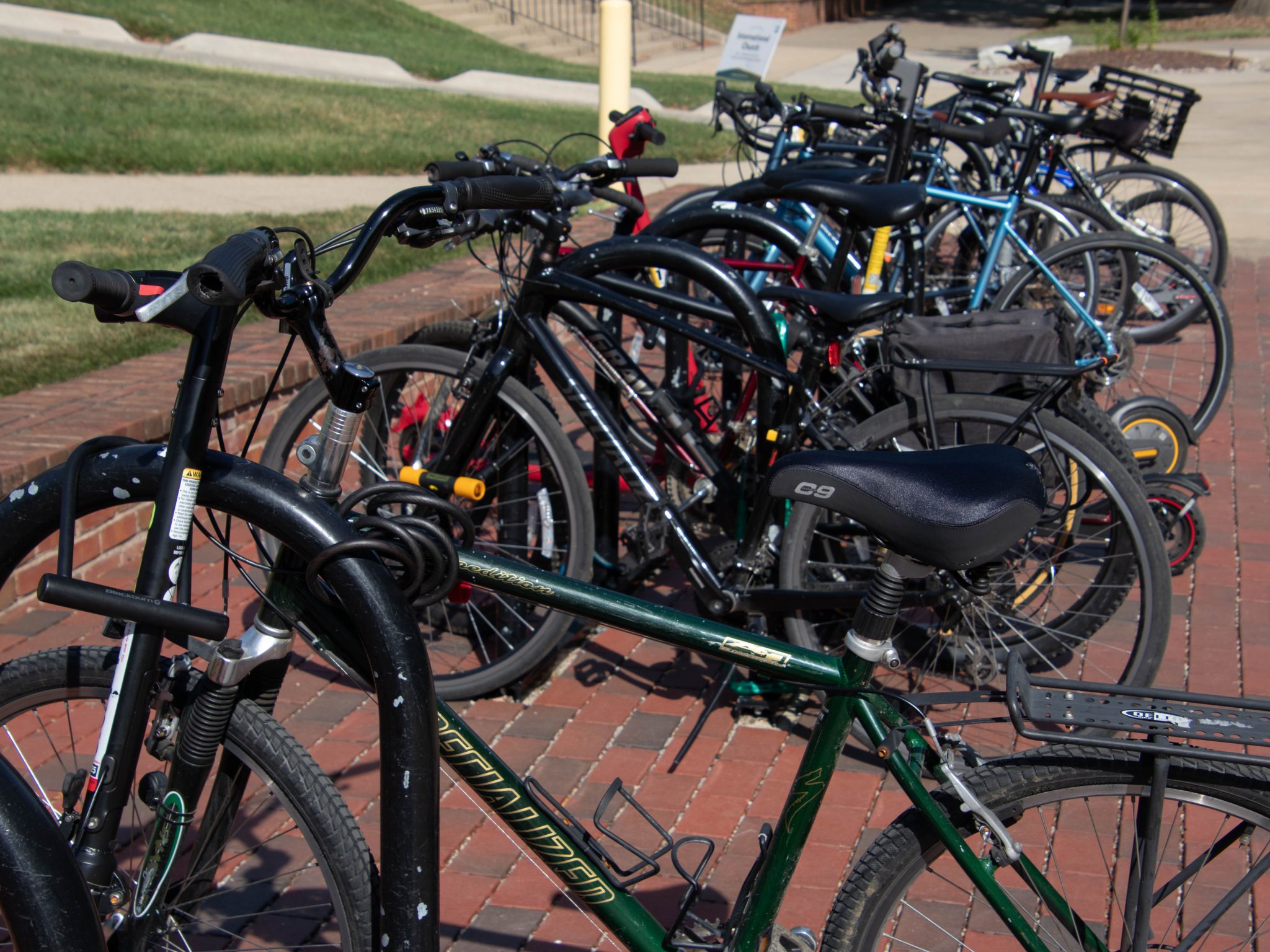As attention to micromobility vehicles, climate resiliency and other environmental issues has grown among the University of Maryland population, the SGA is setting its sights on several environmental priorities for the 2023-2024 school year.
Micromobility — using small vehicles like bikes and scooters to get around — has become an important student concern, especially with the ongoing presence of e-scooters and new permit regulations for privately-owned micromobility vehicles issued by this university’s Department of Transportation Services over the summer. Student Government Association members said they’re looking to address student needs in this area.
Proper storage for micromobility vehicles is a problem for some students, since electric scooters and bikes are not allowed inside campus buildings. Freshman computer science major Ezra Gashaw said he would like to see more areas where students can safely store and charge their vehicles.
“We don’t really have many places to charge, and if we do have places to charge there’s nowhere to lock our scooters,” Gashaw said.
[Alumni innovations assist UMD sustainability efforts]
The SGA’s transportation and infrastructure director, Paisley Brockmeyer, said SGA members have been looking into solutions like placing charging lockers around campus.
Brockmeyer, a junior neurobiology and physiology major, also wants to address safety issues such as the interaction of cars, micromobility vehicles and students on campus roads and sidewalks.
“We found that a big issue in the past, especially for those on bikes, either motorized or not, and with scooters is that students find it very dangerous to be on the road with cars,” she said. “A lot of micromobility users tend to use the sidewalks which then put pedestrians at risk of being hit by faster moving students. So one of our main goals is to try and get those bike lanes put on campus in a widespread way so that everyone can travel safely.”Other SGA members said they are looking to decrease this university’s carbon footprint.
According to this university’s Climate Action Plan 2.0, the campus emitted roughly 150,000 metric tons of carbon in 2021. This university has pledged to become carbon neutral by 2025.
Samantha Briggs, the SGA’s sustainability director, said she hopes this university will bring back the Green Office Program, which promotes the reduction of environmental footprints in offices and units around this university.
[Student outreach, reducing fees headline UMD SGA’s priority list]
Briggs, a junior government and politics major, is also excited to continue the environmental justice council, which the SGA established last year. This group brings together student organizations from across campus to discuss student environmental issues.
“We will discuss local issues students are facing, local issues the greater area of College Park is facing, just facilitate discussions around that,” Briggs said.
For SGA President Alexandra DeBus, sustainability is also at the top of the organization’s priority list.
DeBus wants to tackle food waste by finding ways to redistribute food that would have been thrown away on campus to students facing food insecurity, she said.
“We can look to solve multiple issues at the same time by reducing hunger for students on our campus and reducing the waste that we are putting out,” the senior biochemistry major said.
DeBus also wants to look into advocating for more sustainable lighting sources on campus. She wants to ensure campus areas are well-lit and students feel safe while choosing environmentally friendly options, she said.



